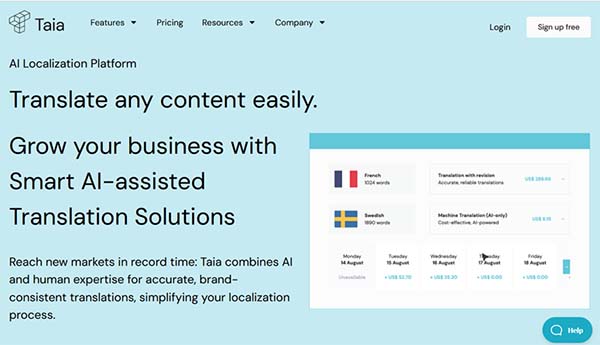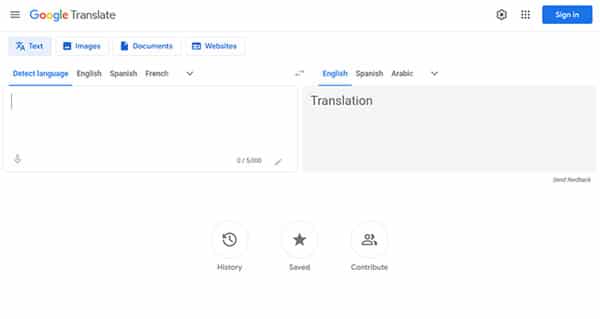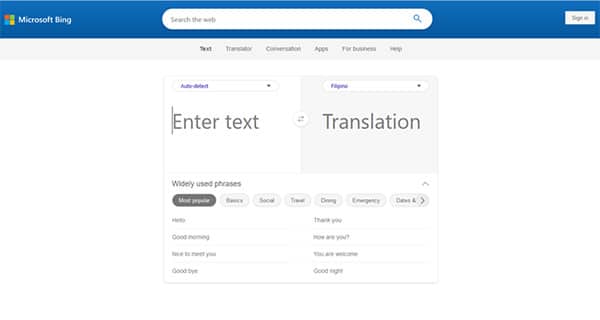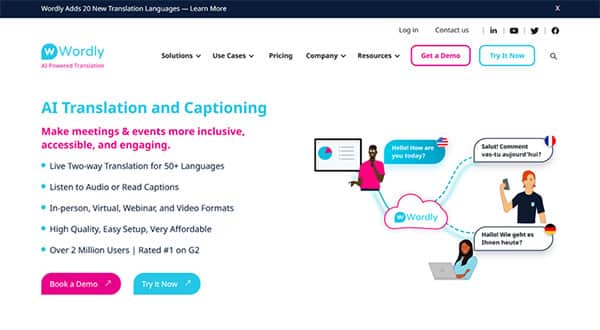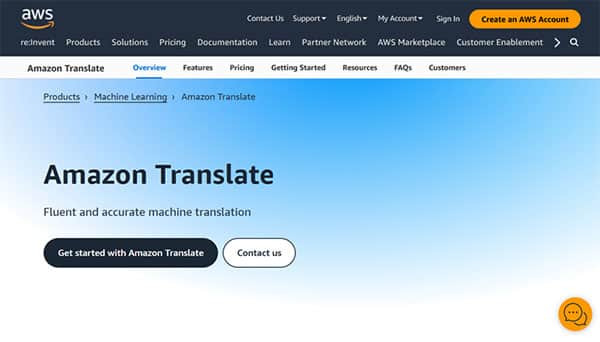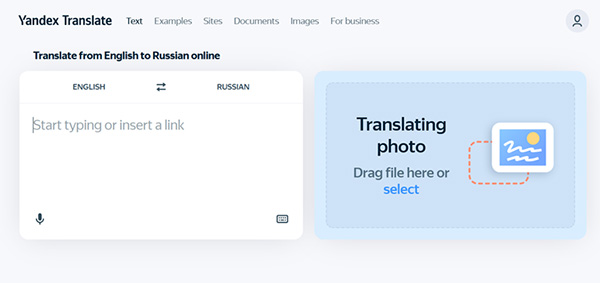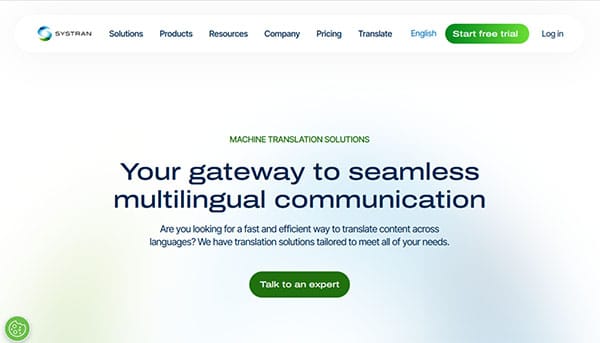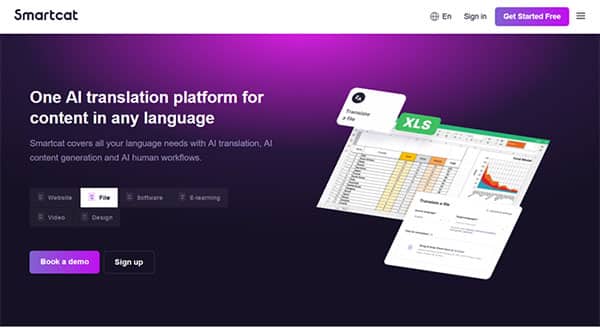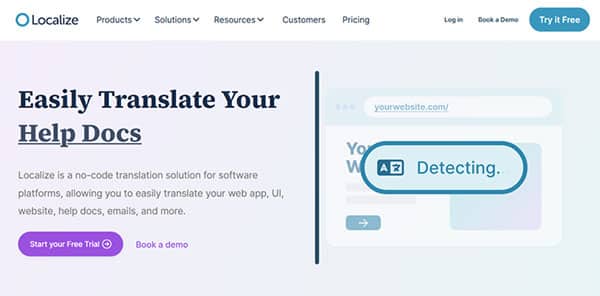10 Best Artificial Intelligence Translation Software
In our increasingly globalized world, the need for effective communication across different languages has never been greater. This is where artificial intelligence translation software comes into play. These advanced tools leverage the power of AI to provide accurate, efficient, and cost-effective translation services, bridging the gap between different languages and cultures. They are transforming the way we communicate, making it easier for businesses to reach international markets, for travelers to navigate foreign countries, and for individuals to connect with people from different linguistic backgrounds.
Artificial intelligence translation software is not just about converting words from one language to another. It’s about understanding the context, the nuances, and the cultural references of the source language and accurately conveying them in the target language. This is a complex task that requires advanced machine learning algorithms and deep linguistic knowledge. But with the rapid advancements in AI technology, these tools are becoming increasingly sophisticated, providing translations that are not only accurate but also contextually relevant and culturally sensitive.
The Need for Artificial Intelligence Translation Software
In today’s interconnected world, the need for artificial intelligence translation software is more pressing than ever. As businesses expand globally, they need to communicate effectively with their international customers, partners, and employees. This requires translating various types of content – from websites and marketing materials to technical documents and user manuals – into multiple languages. Manual translation can be time-consuming, expensive, and prone to errors. AI-powered translation tools, on the other hand, can process large volumes of text quickly and accurately, making them a cost-effective solution for businesses.
Moreover, as individuals, we are increasingly interacting with people from different linguistic backgrounds – be it on social media, online forums, or travel. Artificial intelligence translation software makes these interactions seamless, allowing us to understand and be understood by people from around the world. They are also invaluable tools for learning new languages, providing instant translations, and helping us grasp the nuances of the language we are learning.
10 Best Artificial Intelligence Translation Software
- Taia
- Google Translate
- Bing Microsoft Translator
- Wordly AI
- Amazon Translate
- Sonix
- Yandex Translate
- Systran Translate
- Smartcat AI
- Localize
How to choose the Best Artificial Intelligence Translation Software?
Choosing the best artificial intelligence translation software requires careful consideration of several factors. First and foremost, you need to consider the accuracy of the translations. The software should be able to provide accurate translations that capture the meaning and context of the source text. It should also be able to handle different types of content – from formal business documents to informal social media posts – and translate them appropriately.
The range of languages supported by the software is another important factor. The more languages it supports, the more versatile it is. You should also consider the ease of use of the software. It should have a user-friendly interface and be easy to navigate. Some software also offers additional features like voice translation, image translation, and real-time translation, which can be very useful.
Finally, you should consider the cost of the software. While there are free artificial intelligence translation software available, they may have limitations in terms of the volume of text they can translate or the features they offer. Paid software, on the other hand, usually offers more advanced features and better translation quality.
Artificial Intelligence Translation Software (Free and Paid)
1. Taia
Taia is an artificial intelligence translation software that represents a modern approach to translation services, blending the speed and accessibility of AI-powered tools with the precision and expertise of professional linguists. This platform is designed to cater to businesses of all sizes, offering a suite of services that includes document and website translation, proofreading, subtitling, and more. Taia stands out for its commitment to quality, transparency in pricing, and a user-friendly interface that simplifies the translation process for its users.
What does Taia do?
Taia serves as a comprehensive language service provider, facilitating a wide array of linguistic needs for businesses aiming to globalize their operations. The platform not only translates text across various formats but also offers proofreading, subtitling, transcription, and consulting services. Additionally, Taia provides technical solutions for website and software localization, ensuring that digital content resonates with international audiences. The integration of advanced natural language processing tasks, glossaries, and translation memories further enhances the consistency and quality of the translations provided.
Taia Key Features
Expert Linguists: Taia’s network includes over 2,000 professional translators and language experts, ensuring high-quality translations across a multitude of language pairs.
AI and Human Collaboration: The platform leverages AI technology alongside human expertise to deliver translations that are both quick and accurate.
Transparent Pricing: Taia offers a clear and straightforward pricing model with no hidden fees, allowing clients to understand the cost upfront.
Project Monitoring: Clients can track the progress of their translation projects in real-time, ensuring transparency and control over the process.
Data Protection: Taia prioritizes the security of client data, implementing robust measures to safeguard sensitive information.
Feedback Process: The platform incorporates a client feedback mechanism to continuously improve service quality and client satisfaction.
Taia Pros and Cons
Taia Pros
- Expert linguists
- AI-human collaboration
- Transparent pricing
- Real-time monitoring
- Data protection
- Feedback mechanism
Taia Cons
- Limited rush order options
- Pricing may vary based on project complexity
Taia Pricing Plans
Taia offers four distinct pricing plans to accommodate different translation needs and budgets:
Automatic Plan: This plan, priced at €0.002 per word, is designed for straightforward, AI-powered translations, offering fast turnaround times at the most affordable rates.
Essential Plan: Aimed at businesses requiring professional translations with a balance of quality and cost, this plan, priced at €0.08 per word, includes basic human proofreading.
Enhanced Plan: For clients needing higher translation quality, this plan, priced at €0.11 per word, provides thorough human editing to ensure accuracy and fluency.
Ultimate Plan: The top-tier plan, priced at €0.13 per word, offers the highest quality translations with extensive human expertise, suitable for the most demanding projects.
Payment for these services can be made via debit and credit cards, or bank wire transfer.
2. Google Translate
Google Translate is a versatile and widely-used artificial intelligence translation software developed by Google. It leverages advanced machine learning technologies to provide translations between numerous languages. This tool is designed to break down language barriers and facilitate communication across different languages, making it a valuable resource for individuals, businesses, and organizations worldwide.
What does Google Translate do?
Google Translate provides instant translations between over 100 languages. It can translate text, images, documents, and websites, making it a comprehensive solution for various translation needs. Users can input text manually, upload a document, or use their device’s camera to capture an image of the text they want to translate. Google Translate also offers a conversation mode that allows real-time translation of spoken language, which can be particularly useful in face-to-face interactions or phone calls.
Google Translate Key Features
Text Translation: Google Translate can translate text between a vast array of languages. Users simply input the text they want to translate, select the target language, and the tool provides the translation instantly.
Document Translation: This feature allows users to upload documents in various formats, and Google Translate will translate the content while preserving the original formatting.
Website Translation: Users can input a website URL, and Google Translate will render a translated version of the entire website, making foreign-language content more accessible.
Image Translation: By using the device’s camera or an uploaded image, Google Translate can recognize and translate text within images. This is particularly useful for translating signs, menus, or other printed material.
Conversation Mode: This feature provides real-time translation of spoken language, facilitating communication in different languages during live conversations.
Offline Translation: Google Translate allows users to download language packs for offline use, ensuring that translation services are available even without an internet connection.
Google Translate Pros and Cons
Google Translate Pros
- Supports over 100 languages
- Offers multiple translation methods (text, document, website, image)
- Real-time translation with conversation mode
- Offline translation capabilities
- Free to use
Google Translate Cons
- Requires internet connection for most features
Google Translate Pricing Plans
Google Translate offers free artificial intelligence translation software.
3. Bing Microsoft Translator
Bing Microsoft Translator is a powerful artificial intelligence translation software developed by Microsoft. It is designed to break down language barriers and facilitate seamless communication across different languages. This software leverages advanced machine learning technologies to provide accurate translations in real-time, making it an invaluable tool for businesses, educators, travelers, and anyone needing to communicate in a foreign language.
What does Bing Microsoft Translator do?
Bing Microsoft Translator serves as a bridge between languages, enabling users to translate text, speech, and even entire websites into over 60 languages. It uses artificial intelligence to understand and translate languages accurately, making it possible for users to communicate effectively in different languages. The software can be used on various platforms, including web browsers, mobile devices, and even on certain wearable technologies, providing translations whenever and wherever needed.
Bing Microsoft Translator Key Features
Real-Time Translation: Bing Microsoft Translator provides real-time translations, allowing users to communicate effectively without any delay. This feature is particularly useful in live conversations or meetings where immediate translation is required.
Support for Over 60 Languages: The software supports translations in over 60 languages, making it a versatile tool for global communication.
Text, Speech, and Website Translation: Bing Microsoft Translator is not limited to text translations. It can also translate speech and entire websites, making it a comprehensive translation tool.
Integration with Other Microsoft Products: Bing Microsoft Translator can be integrated with other Microsoft products like Office, Edge, and more, providing seamless translation services across these platforms.
Offline Translations: The software also offers offline translations, a feature that comes in handy when internet connectivity is not available.
Customization: Bing Microsoft Translator allows users to customize translations according to their specific needs, enhancing the overall user experience.
Bing Microsoft Translator Pros and Cons
Bing Microsoft Translator Pros
- Real-time translation
- Supports over 60 languages
- Text, speech, and website translation
- Integration with other Microsoft products
- Offline translations
- Customization options
Bing Microsoft Translator Cons
- Limited characters for translation
- Requires internet for most features
Bing Microsoft Translator Pricing Plans
Bing Microsoft Translator offers free artificial intelligence translation software.
4. Wordly AI
Wordly AI is a leading platform in the realm of artificial intelligence translation software. It leverages advanced machine learning algorithms to provide real-time translation services, making it a powerful tool for overcoming language barriers in various settings. Wordly AI has made a significant impact in the meetings and events market since its launch in 2019, offering a convenient, efficient, and affordable solution for multilingual collaboration.
What does Wordly AI do?
Wordly AI provides real-time translation services powered by artificial intelligence. It caters to both in-person and virtual meetings, translating speakers’ words into over 30 languages. The platform operates as a SaaS (Software as a Service), making it easily accessible on various devices, including computers, tablets, and smartphones. Wordly AI’s translation services extend to subtitles, audio, and transcripts, making it a versatile tool for multilingual communication.
Wordly AI Key Features
Real-Time Translation: Wordly AI offers real-time translation services, converting spoken words into over 30 languages instantly. This feature is particularly useful in live meetings and events, where immediate understanding is crucial.
Accessibility: The platform is designed to be user-friendly and accessible on various devices. Whether you’re using a computer, tablet, or smartphone, you can easily access Wordly AI’s services.
Affordability: Compared to human interpreters, Wordly AI provides a more cost-effective solution for translation needs. It offers high-quality translations at an affordable price, making it a viable option for businesses of all sizes.
Security and Privacy: Wordly AI takes data security and privacy seriously. The platform is built with enterprise-class security and privacy controls, ensuring that users’ data is safe and secure.
Integration: Wordly AI can be integrated with various platforms, enhancing its versatility and convenience. This feature allows users to leverage Wordly AI’s services across different platforms seamlessly.
Customer Support: Wordly AI provides robust customer support, assisting users in setting up and navigating the platform. This feature ensures a smooth and hassle-free user experience.
Wordly AI Pros and Cons
Wordly AI Pros
- Real-time translation
- User-friendly
- Affordable
- Secure and private
- Integrates with various platforms
- Excellent customer support
Wordly AI Cons
- Requires internet connection
- No pricing is available on website
Wordly AI Pricing Plans
Wordly AI offers various custom pricing plans to cater to different user needs. The pricing is based on the number of translation hours, attendees using translation, and languages. Users need to contact the sales team for a quote.
5. Amazon Translate
Amazon Translate is a neural machine translation service that delivers fast, high-quality, affordable, and customizable language translation. It’s designed to serve a wide range of use cases, from translating user-generated content to enabling cross-lingual communications between users. The service is powered by machine learning, allowing it to continually improve its translations over time. It’s a versatile tool that can be integrated into applications with a single API call, making it a valuable asset for businesses operating in multilingual environments.
What does Amazon Translate do?
Amazon Translate is designed to provide highly accurate translations for a variety of use cases. It can automatically translate high volumes of user-generated content, such as social media feeds, profile descriptions, and comments, in real time. It can also analyze online conversations in different languages, helping businesses understand sentiments toward their brand, product, or service. Furthermore, it enables real-time translation within chat, email, helpdesk, and ticketing applications, allowing English-speaking agents to communicate with customers across multiple languages.
Amazon Translate Key Features
Broad Language Coverage: Amazon Translate supports translation between 75 languages, covering 5550 translation combinations. This broad language coverage makes it a versatile tool for businesses operating in multilingual environments.
Neural Network-Based: Amazon Translate uses deep learning techniques to produce more fluent and natural translations. The engines are trained on a wide variety of content across different use cases and domains to ensure high-quality translations.
Customization: Amazon Translate allows users to customize their machine learning-translated output to define brand names, model names, and other unique terms. This feature ensures that translations are tailored to the specific needs of the business.
Real-Time and Batch Translations: Amazon Translate supports both real-time and batch translations, providing flexibility depending on the volume and urgency of the translation needs.
Secure Machine Translation: Communication between your applications and the Amazon Translate service is protected by SSL. Any content processed by Amazon Translate is encrypted and stored at rest in the AWS Region where the service is used.
Pay-Per-Use: With Amazon Translate, you pay only for what you use. This pricing model makes it a cost-effective solution for businesses of all sizes.
Amazon Translate Pros and Cons
Amazon Translate Pros
- Broad language coverage
- High-quality translations
- Real-time and batch translations
- Customizable translations
- Secure machine translation
- Pay-per-use pricing model
Amazon Translate Cons
- No free tier beyond the initial AWS Free Tier
- Limited support for less common languages
Amazon Translate Pricing Plans
Amazon Translate offers two main pricing plans: the Standard Translation and the Active Custom Translation.
Standard Translation: This plan is billed at $15.00 per million characters. It provides broad language coverage, neural network-based translations, customized machine translations, secure machine translations, and both batch and real-time translations.
Active Custom Translation: This plan is billed at $60.00 per million characters. It includes all the features of the Standard Translation plan, with the addition of active customer translation batch, which allows for further customization of translations.
Amazon Translate accepts debit and credit cards, and Amazon Pay for payments.
6. Sonix
Sonix is an advanced audio and video transcription service that leverages artificial intelligence to provide fast, accurate, and affordable transcriptions. It is designed to cater to a wide range of users, from journalists and podcasters to researchers and legal professionals. Sonix simplifies the process of converting spoken words into written text, offering a suite of tools that enhance productivity and streamline workflows. With its user-friendly interface and robust features, Sonix stands out as a valuable tool for anyone in need of reliable transcription services.
What does Sonix do?
Sonix provides an automated artificial intelligence translation software to turn audio and video files into text. It uses sophisticated AI algorithms to ensure high accuracy and quick turnaround times. Users can upload their media files in various formats, and Sonix will generate a transcript that closely matches the spoken content. The platform also offers features such as multi-folder organization, search functionality across transcripts, and integration with popular tools like Zoom and Adobe Premiere. This makes it easy for users to manage their transcriptions and incorporate them into their existing workflows, all while maintaining a high level of security for their data.
Sonix Key Features
Automated Transcription: Sonix uses AI to convert audio and video to text rapidly, providing users with transcripts that are both fast and precise.
Multi-Folder Nesting: Users can stay organized by categorizing their transcripts into multiple folders, making it easier to manage large volumes of files.
Search Functionality: Sonix allows searching for words, phrases, and themes across all transcripts, which is invaluable for users who need to locate specific information quickly.
Workflow Integration: The platform can connect with various tools, including web conferencing systems and video editing platforms, to streamline the transcription process within the user’s workflow.
AI Summarization: Sonix can automatically summarize transcripts, helping users to distill the essence of their content without manual effort.
Security: With a focus on data protection, Sonix ensures that user information and transcripts are secure, providing peace of mind for sensitive content.
Sonix Pros and Cons
Sonix Pros
- Fast transcription
- High accuracy
- Affordable pricing
- Easy integration
- Secure platform
- AI summarization
Sonix Cons
- Limited language support
- No mobile app
- Add-on costs for some features
Sonix Pricing Plans
Sonix offers 3 pricing plans:
Standard Plan: This plan, priced at $10 per hour, is ideal for individuals or small teams, offering essential transcription features at a competitive price.
Premium Plan: Aimed at professionals requiring advanced capabilities, this plan, priced at $5 per hour, includes additional features such as entity and topic detection for English transcripts.
Enterprise Plan: Tailored for large organizations, this plan provides comprehensive transcription solutions with custom pricing to fit enterprise-scale needs.
Sonix accepts various payment methods, including debit and credit cards, and bank wire transfers, ensuring flexibility and convenience for users when subscribing to their services.
7. Yandex Translate
Yandex Translate stands as a user-friendly online artificial intelligence translation software, offering a bridge between languages for both casual users and professionals alike. It provides a seamless translation experience across a multitude of languages, catering to a global audience with its comprehensive linguistic capabilities. With its intuitive interface and robust technology, Yandex Translate facilitates clear communication and understanding, regardless of language barriers.
What does Yandex Translate do?
Yandex Translate serves as a digital polyglot, offering synchronized translation across 102 languages. It is designed to understand and convey the meaning of words, phrases, and even large texts from one language to another. The software combines predictive typing, a dictionary complete with transcription, pronunciation guides, and contextual usage examples to enhance the translation process. This makes it a valuable tool for anyone needing quick translations for travel, work, education, or personal use.
Yandex Translate Key Features
Synchronized Translation: Yandex Translate offers real-time translation across a wide array of languages, ensuring users can communicate without delay.
Predictive Typing: The software anticipates what the user intends to type next, speeding up the input process and enhancing user experience.
Comprehensive Dictionary: With detailed transcriptions and pronunciation guides, users can learn not just the translation but also how to say it.
Contextual Examples: The tool provides examples of how words and phrases are used in real-life situations, aiding in understanding and proper usage.
User Feedback Integration: Yandex Translate incorporates user feedback to continuously improve its service, tailoring it to the needs of its audience.
Multi-Platform Accessibility: Accessible on various devices, it allows for seamless translation no matter where the user is or what device they are using.
Yandex Translate Pros and Cons
Yandex Translate Pros
- Multilingual support
- Real-time translation
- User-friendly interface
- Predictive typing
- Pronunciation guides
- Contextual usage examples
Yandex Translate Cons
- Limited offline capabilities
Yandex Translate Pricing Plans
Yandex Translate offers free artificial intelligence translation software.
8. Systran Translate
Systran Translate is a professional artificial intelligence translation software that leverages artificial intelligence to provide seamless multilingual communication. It is designed to meet the diverse translation needs of businesses, offering a fast and efficient way to translate content across more than 50 languages. This tool is capable of translating all types of documents, including Office files, PDFs, XML, IDML, and more, making it a versatile solution for professionals in various fields.
What does Systran Translate do?
Systran Translate is a machine translation solution that enables users to translate whole documents, text from websites, and even images into dozens of languages. It automatically detects the source language and provides accurate translations, thanks to its advanced AI capabilities. The software also allows users to create and import different terminology, implement “User Dictionaries” for word morphology/homography, and set up grammatical rules, offering a high degree of customization to meet specific translation requirements.
Systran Translate Key Features
Efficient Document Translation: Systran Translate can handle all major document formats, translating entire files with ease and maintaining the original layout, graphs, and illustrations.
Webpage Translation: With just one click, users can translate any webpage content into the language of their choice, enhancing their web browsing experience.
Image Translation: The software is capable of translating text from images, a feature that sets it apart from many other translation tools.
User Dictionaries: Systran Translate allows users to create and import their own dictionaries, supporting word morphology, homographs, and inflections. This feature ensures that specific terminology is translated accurately.
Customization Tools: The software offers built-in customization tools that enable users to tailor the translation process to their specific needs.
Support for Over 50 Languages: Systran Translate supports translation in more than 50 languages, making it a comprehensive solution for multilingual communication.
Systran Translate Pros and Cons
Systran Translate Pros
- High-quality translations
- Supports a wide range of languages
- Versatile document translation capabilities
- Customizable user dictionaries
- Efficient webpage and image translation
Systran Translate Cons
- May require some time to learn all features
- Customization may be complex for beginners
- No free plan is available
Systran Translate Pricing Plans
Systran Translate offers four different pricing plans to cater to various user needs.
Pro Lite Plan: Priced at 4.99€ per month/per user with an annual commitment, this plan offers unlimited advanced text translation, file translation for Word, Excel & PowerPoint, XML, JSON, and allows up to 150 pages of text per month. It supports 55 languages and includes access to SYSTRAN Apps and Microsoft Addin (Office 365).
Pro Plus Plan: This plan costs 13.99€ per month/per user with an annual commitment. It includes all features of the Pro Lite Plan, with the addition of PDF file translation and allows up to 600 pages of text per month. It supports up to 20 users.
Pro Premium Plan: Priced at 31.99€ per month/per user with an annual commitment, this plan offers all features of the Pro Plus Plan, with the addition of full data privacy, CAT Tool/TMS Connectors, and SYSTRAN Model Studio. It allows up to 2,000 pages of text per month and supports up to 50 users.
Pro Speech Plan: This plan costs 57.99€ per month/per user with an annual commitment. It includes all features of the Pro Premium Plan, with the addition of speech translation.
Systran Translate accepts debit and credit cards and bank wire transfer for payments.
9. Smartcat AI
Smartcat AI is an artificial intelligence translation software platform that offers a wide range of opportunities to translate and manage translations, significantly speeding up the process of translating repetitive content. The platform is trusted by 25% of Fortune 500 companies and is known for its cost savings, high accuracy, and fast turnaround times. It’s an intuitive platform that provides a seamless and secure translation process, whether you’re an individual translator, a language service provider, or an enterprise.
What does Smartcat AI do?
Smartcat AI is an artificial intelligence translation software that combines AI translation, collaborative workflows, and the largest industry marketplace. It offers a suite of AI Translation features, including standard translation engines, automated OCR for PDFs and images, generative AI translation with terminology control, and AI quality measurement. The platform supports resource management, integrations, reporting and analytics, access control, and data security. It also offers custom implementation services, including needs assessment and deployment by solutions engineers, to optimize all your localization workflows.
Smartcat AI Key Features
Integrated Marketplace: Smartcat AI has an integrated marketplace with over 500,000 translators, editors, proofreaders, and agencies to fulfill any of your translation projects. You can choose different translation options such as AI translation, human translation, or a combination of both.
Payment Automation System: Thanks to Smartcat’s payment automation system, you can hire as many translators as you need, collaborate with them with one agreement, and pay them all with just one invoice every month.
AI Translation: Smartcat leverages cutting-edge AI technology to enhance translation capabilities. The AI Translation feature encompasses standard translation engines, automated OCR for PDFs and images, generative AI translation with terminology control, and AI quality measurement.
Custom Implementation Services: Smartcat offers custom implementation services, including needs assessment and deployment by solutions engineers, to optimize all your localization workflows.
Resource Management: This comprehensive platform supports resource management, integrations, reporting and analytics, access control, and data security, ensuring a seamless and secure translation process.
Adaptive AI Technology: Smartcat’s AI technology remembers your brand’s unique voice and terminology, maintaining a consistent tone and style across translations.
Smartcat AI Pros and Cons
Smartcat AI Pros
- Free to use
- Robust CAT-tool
- Attractive for translators, small teams, and localization specialists
- Fast upload and download of documents
- Easy creation of projects by language combination
Smartcat AI Cons
- No free plan is available
- Requires internet connection
Smartcat AI Pricing Plans
Smartcat AI offers 2 pricing plans:
Starter Plan: Priced at $99 per month, this plan offers 150,000 Smartwords per year. It includes all the features of the Free Plan, with projects that never expire.
Enterprise Plan: For this plan, you need to contact Smartcat for a custom quote. It includes all the features of the Unite Plan, with the addition of enterprise-compliant procurement platform and unlimited collaborative workspaces.
Smartcat AI accepts debit and credit cards for payments.
10. Localize
Localize is an artificial intelligence translation software that offers a comprehensive solution for businesses aiming to globalize their digital presence. It is designed to streamline the process of translating and localizing web applications and websites, making it easier for businesses to reach a wider, global audience. This software is a no-code solution, meaning it requires minimal technical expertise to implement and use, making it a user-friendly choice for businesses of all sizes.
What does Localize do?
Localize provides an automated, no-code solution for translating and localizing web applications and websites. It uses advanced AI technology to automatically detect and translate content, reducing the time and effort typically associated with manual translation. The software is designed to integrate seamlessly with various technologies, making it a versatile solution for businesses operating in diverse digital environments. It not only translates text but also adapts the content to fit the cultural context of the target audience, ensuring a more personalized and engaging user experience.
Localize Key Features
Automatic Content Detection: Localize automatically identifies all the content on your website or web application that needs to be translated. This feature saves time and ensures that no content is overlooked during the translation process.
No-Code Solution: Localize is designed to be user-friendly and requires no coding skills to implement. This makes it accessible to businesses of all sizes, regardless of their technical expertise.
Integration Across Technologies: Localize can be integrated with various technologies, making it a versatile solution for businesses operating in diverse digital environments.
Automatic Translation Delivery: Localize automatically delivers your published translations, ensuring that your translated content is always up-to-date.
Privacy and Security Compliance: Localize is compliant with industry-recognized frameworks for privacy and security, providing peace of mind for businesses concerned about data protection.
Consultative Customer Success Team: Localize provides a proactive customer success team that helps businesses optimize their localization process and align their business strategy with localization.
Localize Pros and Cons
Localize Pros
- User-friendly interface
- No-code solution
- Automatic content detection
- Seamless integration with various technologies
- Compliance with privacy and security standards
- Proactive customer success team
Localize Cons
- No pricing is available
- Ongoing maintenance costs
- Internet connection is required
Localize Pricing Plans
Localize offers two main pricing plans: the Basic Tier and the Advanced Tier.
Basic Tier: This plan is best suited for individuals and small companies looking to translate simple websites into 1-4 languages.
Advanced Tier: This plan is designed for mission-critical use cases and dynamic web applications. It provides an enterprise-ready platform with strategic guidance.
Users need to contact Localize’s sales team for the pricing details.
Localize accepts debit and credit cards, and PayPal for payments.
FAQs on Artificial Intelligence Translation Software
What is Artificial Intelligence Translation Software?
Artificial intelligence translation software is a tool that uses machine learning algorithms and natural language processing techniques to translate text from one language to another. It goes beyond simple word-for-word translation to understand the context and nuances of the source text and provide accurate and contextually relevant translations.
How does an Artificial Intelligence Translation Software work?
Artificial intelligence translation software works by analyzing the source text, understanding its structure, syntax, and context, and then producing a translation in the target language that preserves the meaning and context of the original text. It uses machine learning algorithms to learn from vast amounts of data and improve its translation accuracy over time.
Who can benefit from using Artificial Intelligence Translation Software?
Anyone who needs to translate text from one language to another can benefit from using artificial intelligence translation software. This includes businesses that operate in international markets, travelers who visit foreign countries, individuals who interact with people from different linguistic backgrounds, and language learners.
What are the different types of Artificial Intelligence Translation Software?
There are several types of artificial intelligence translation software, including online translation tools, translation apps, translation management systems, and AI-powered language learning platforms. Some software focuses on translating text, while others also offer voice translation, image translation, and real-time translation features.
Is there free Artificial Intelligence Translation Software available?
Yes, there is free artificial intelligence translation software available. However, they may have limitations in terms of the volume of text they can translate or the features they offer. For more advanced features and better translation quality, you may need to opt for paid software.
What are the limitations of Artificial Intelligence Translation Software?
While artificial intelligence translation software can provide accurate and efficient translations, they are not perfect. They may struggle with complex sentence structures, idioms, jokes, local references, and jargon. They may also not be able to fully capture the cultural nuances of the source text. Therefore, for content that is culturally dense or has nuanced meanings, human touch remains essential.
Who should be using Artificial Intelligence Translation Software?
Anyone who frequently needs to translate text from one language to another should consider using artificial intelligence translation software. This includes businesses that operate in international markets, travelers, individuals who interact with people from different linguistic backgrounds, and language learners.
Conclusion
Artificial intelligence translation software is a powerful tool that is transforming the way we communicate across different languages. It offers a cost-effective, efficient, and accurate solution for translating text, making it an invaluable tool for businesses and individuals alike. However, while these tools are becoming increasingly sophisticated, they are not a replacement for human translators. They are a tool to aid human translators, to make their work more efficient and accurate.
As AI technology continues to advance, we can expect artificial intelligence translation software to become even more accurate and versatile. They will continue to break down language barriers and foster global communication and understanding. In the end, the goal of artificial intelligence translation software is not to replace human translators, but to augment their capabilities and make language translation more accessible to everyone.
Information is supplied by the app/software/service provider or retrieved from publicly accessible materials. Please notify us if you find any updated or inaccurate information.

